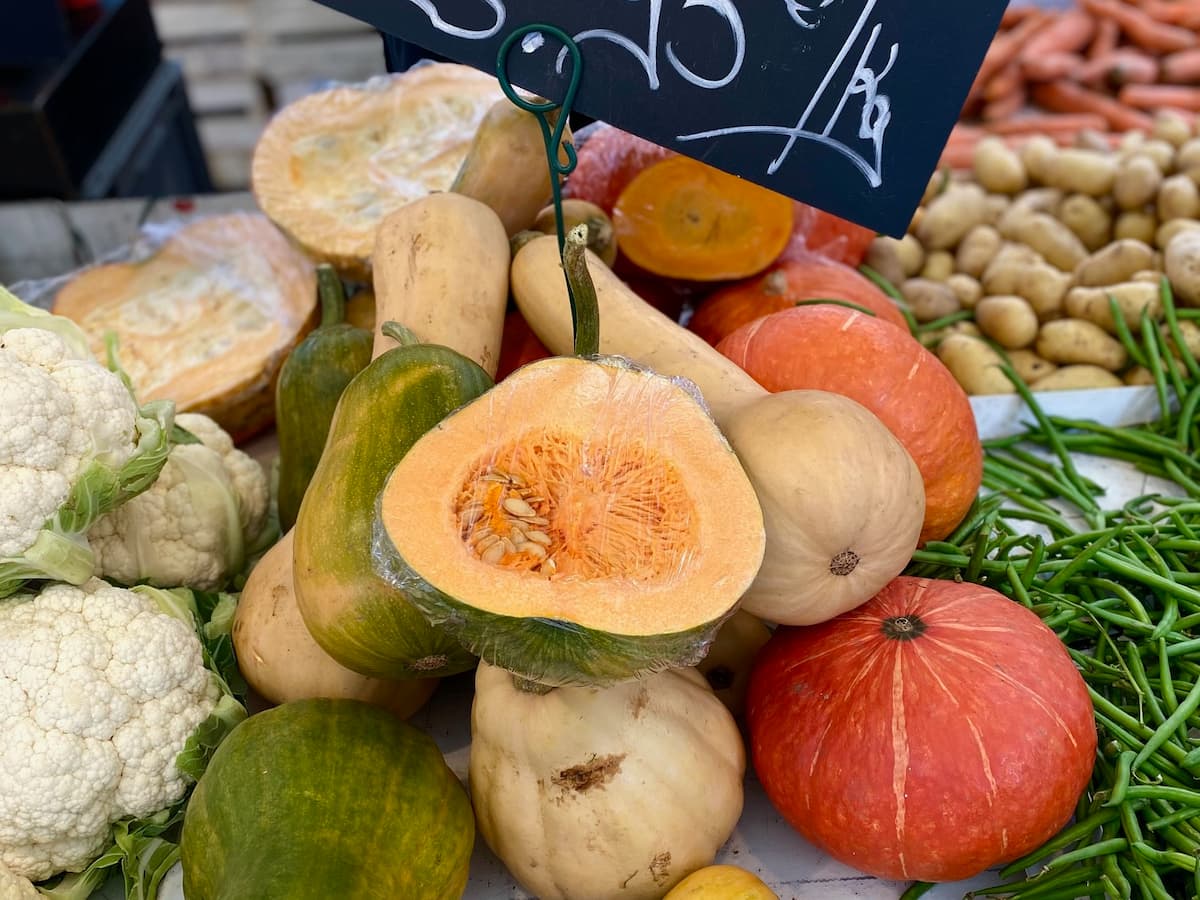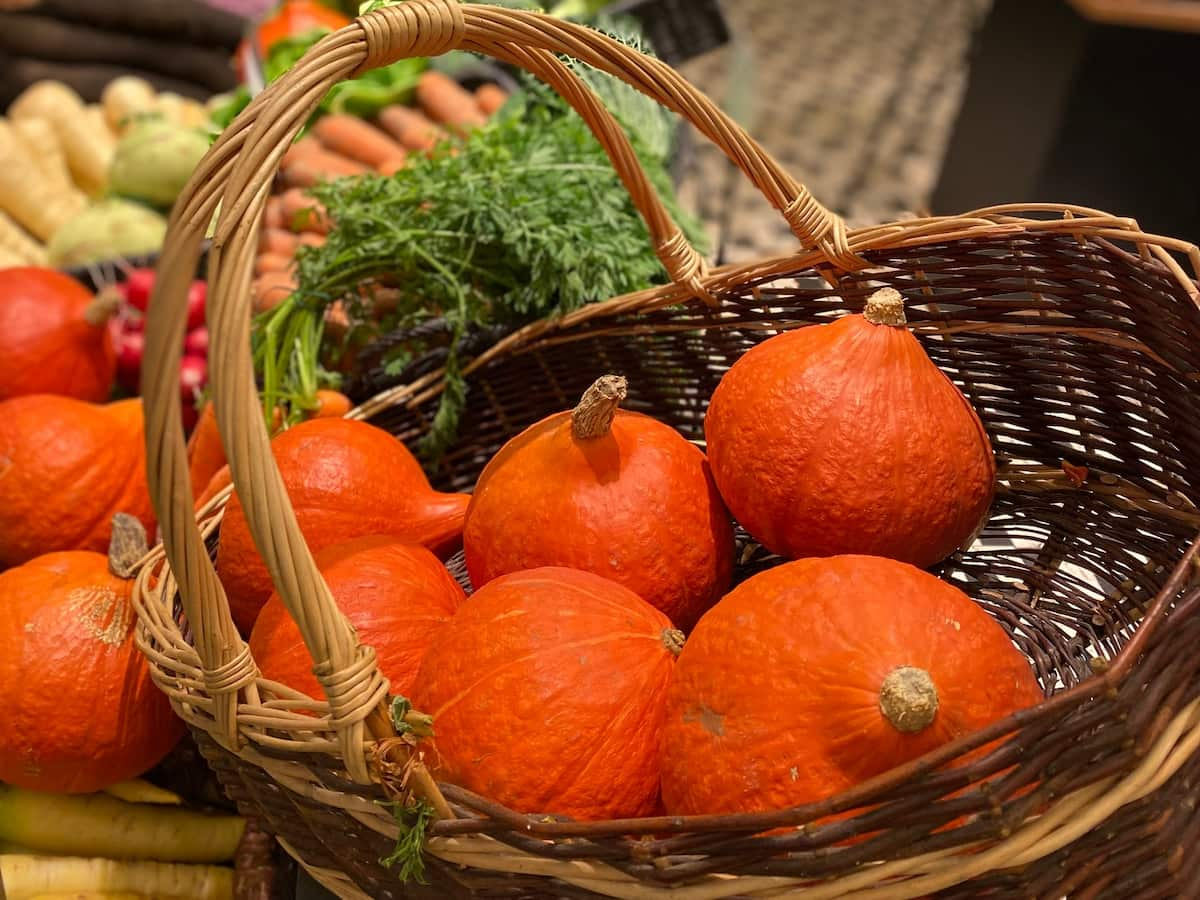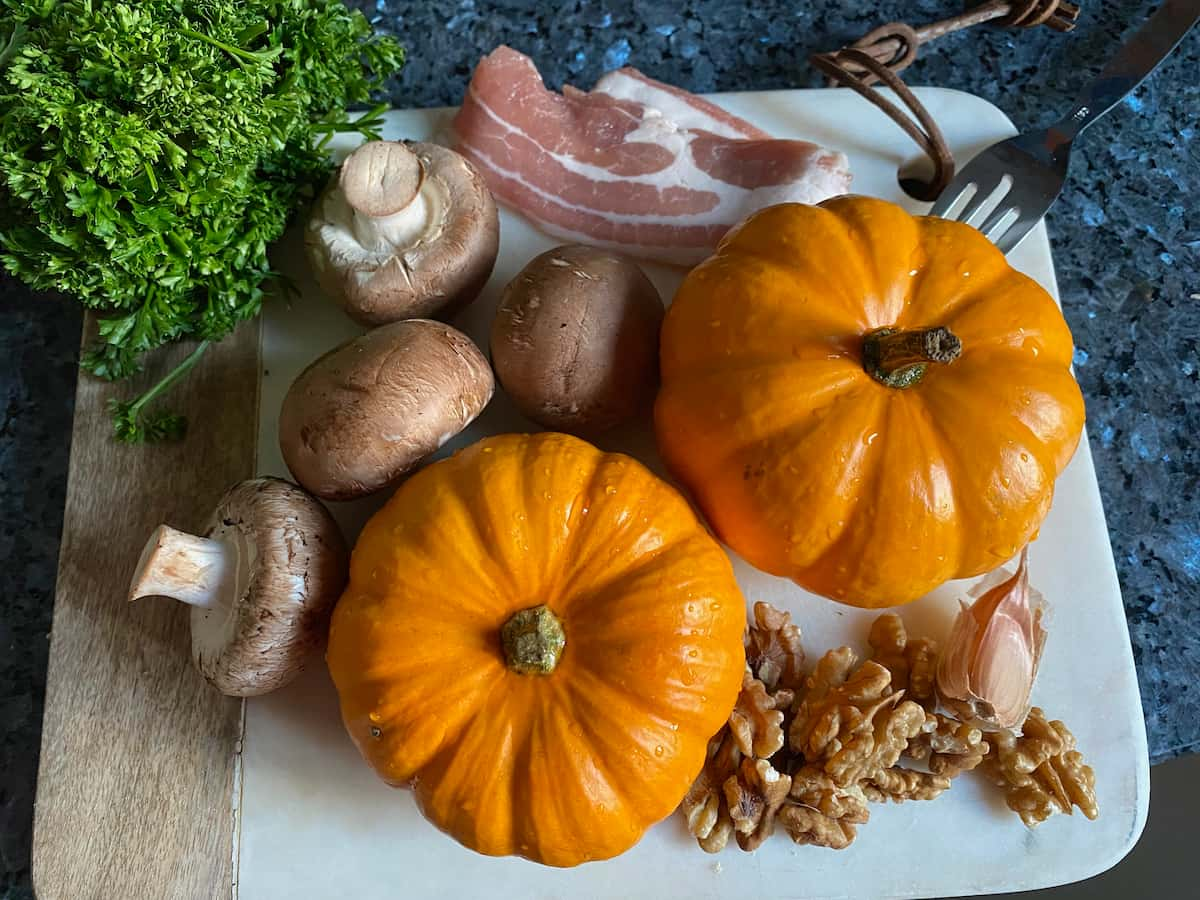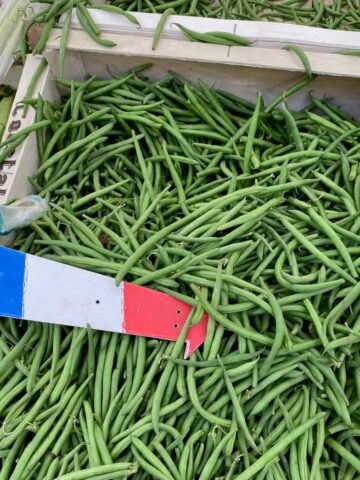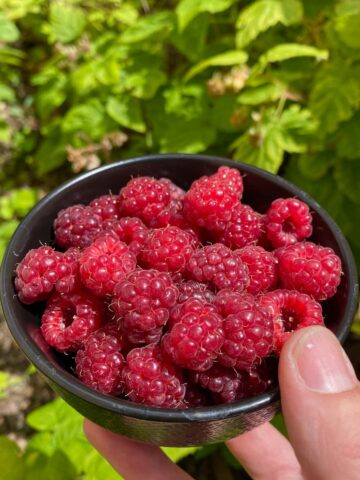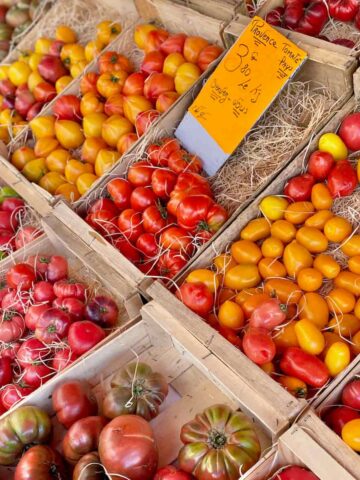What can you make with pumpkin and squash? Discover the various kinds in France, how to choose and prepare them, with healthy French pumpkin or squash recipes.
Pumpkin/Squash Season
Autumn/Winter.
High season in France for squash and pumpkins is from October to January. Those harvested during this time can last all winter.
Is Squash a Vegetable or Fruit?
Although considered a vegetable, botanically speaking, squash ('courge' in French) is a fruit as they have a flower and contain seeds.
Their taste is naturally sweet, so add sugar with care - especially for butternut squash, which is sweeter than other squash varieties.
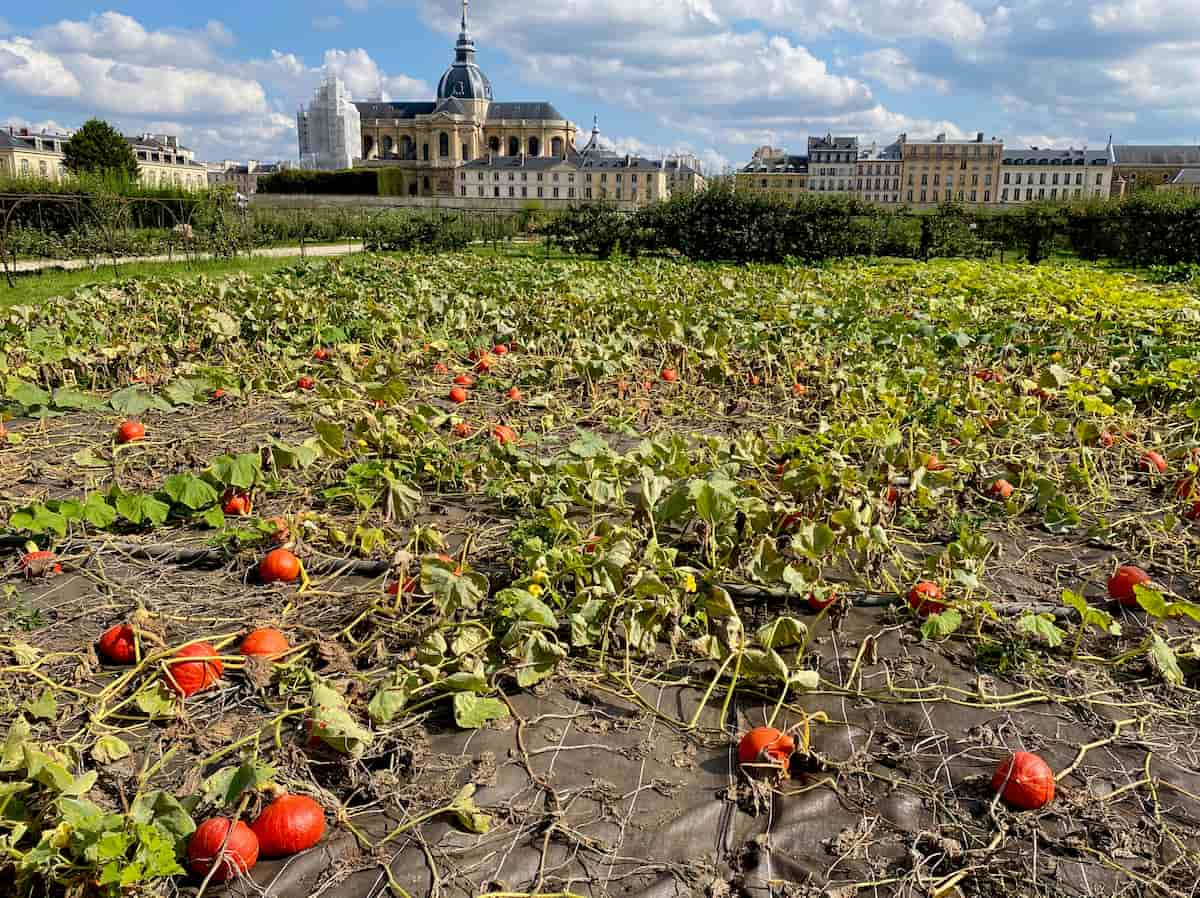
A Little History
Pumpkins and squash date back to c. 6000BC from Mexico but were not introduced into Europe until the 16th Century by the Portuguese.
Before this time, squash didn't have different varieties until 1860 when French botanist, Charles Naudin established 20 varieties.
Is Squash and Pumpkin Different?
Although there are 2 main classifications, squash and pumpkin are the same thing under the umbrella of the Cucurbita family.
Charles Naudin classified squash and pumpkin into the following:
- Cucurbita pepo - squash. The form is round and long: such as courgettes/zucchini, spaghetti squash, Jack'o'Lantern.
- Cucurbita maxima - pumpkin. Large round pumpkins such as Blanc de Paris and Rouge vif d'Etampes, chestnut/red kuri squash (potimarron). Hard-skinned.
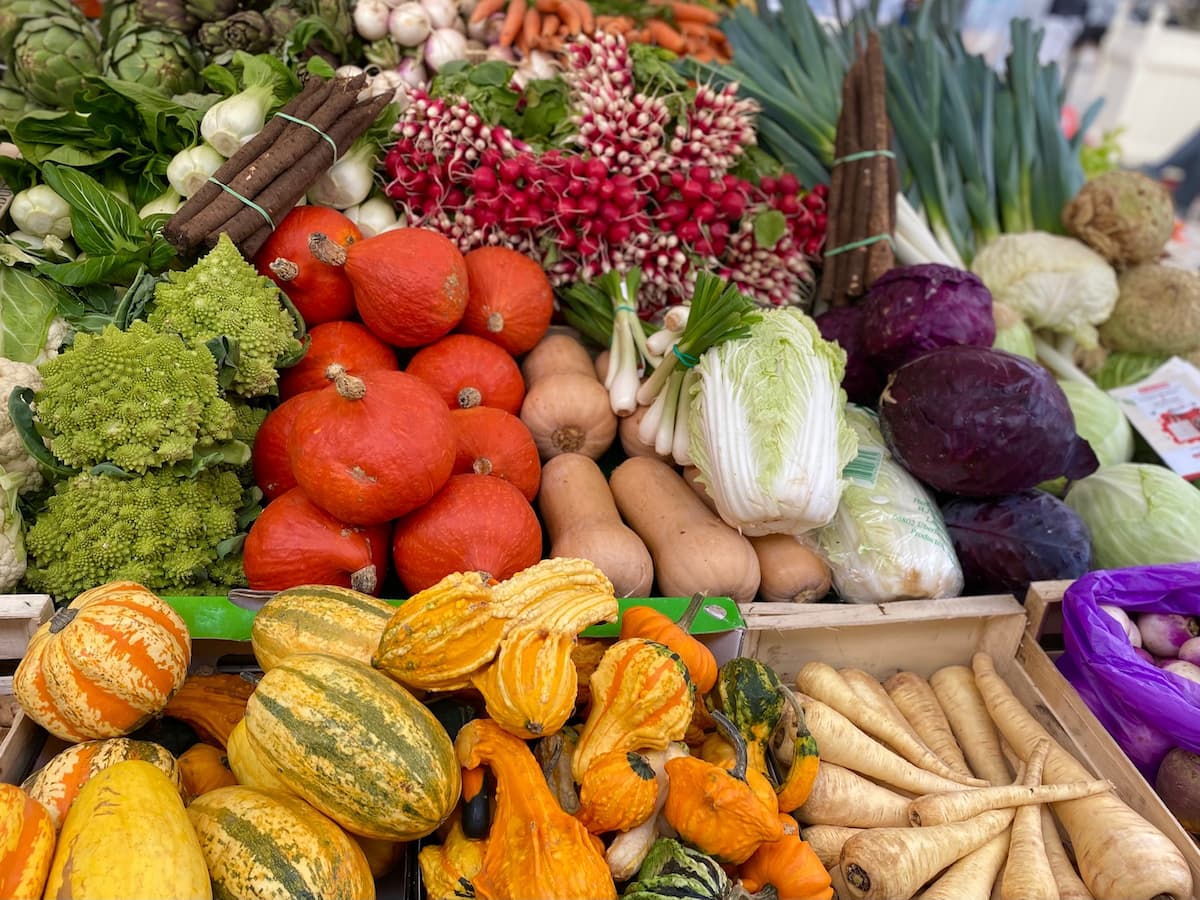
Popular French Pumpkin Varieties
- Potimarron. It's the tough, thicker orange-reddish-skinned round pumpkin that even tastes nutty like a chestnut with the thin skin edible once cooked. It's less watery than other varieties. Frenchman, Philippe Desbrosses brought them back from Japan. Known as onion squash in the UK, Japanese or Red Kuri Squash, Uchiki kuri or Green Hokkaido.
- Large orange pumpkin (potiron in French) has only become popular in the last few years in France (cucurbita maxima).
- Mini pumpkins, called Jack-be-Little are also known as Pomarine in France, although they originated in Colorado, USA. Little pumpkins or Little October (there are many varieties including Munchkins, Small Sugar), are great for stuffing!
See my quick recipe for mini stuffed pumpkins. - Courgettes (zucchini) are mini courges or squash.
Are All Pumpkins Edible?
The majority of pumpkins are edible except for gourdes or coloquintes as they are called in France. From the winter squash family, pumpkins are either round or ribbed. Their pulp is yellow or orange with either yellow, orange or green thick skins.
Skins are normally discarded but potimarron skin is edible (chestnut or Hokkaido Red Kuri squash). In fact, chestnut pumpkin without the skin is like a day without sunshine.
The pulp, with central seeds and strands removed, is eaten cooked mainly in soups, gratins, tarts and as a purée (see recipes below). Toast the seeds and add to dishes such as stuffed zucchini and homemade maple granola or Christmas granola.
According to Aprifel, pumpkins or squash are healthy: high in fibre, potassium, vitamin B5 and provitamin A betacarotene.
However, beware of Gourds or Coloquintes in French. Citrulus colocynthis are toxic and decorative only. Available at French markets, these smaller varieties look pretty but add the likes of Gooseneck and Angel Wings (those that are funny pear-shaped with long necks) to your Autumn or fall table decor only. The good news is that they are normally labelled as Decorative Gourds.
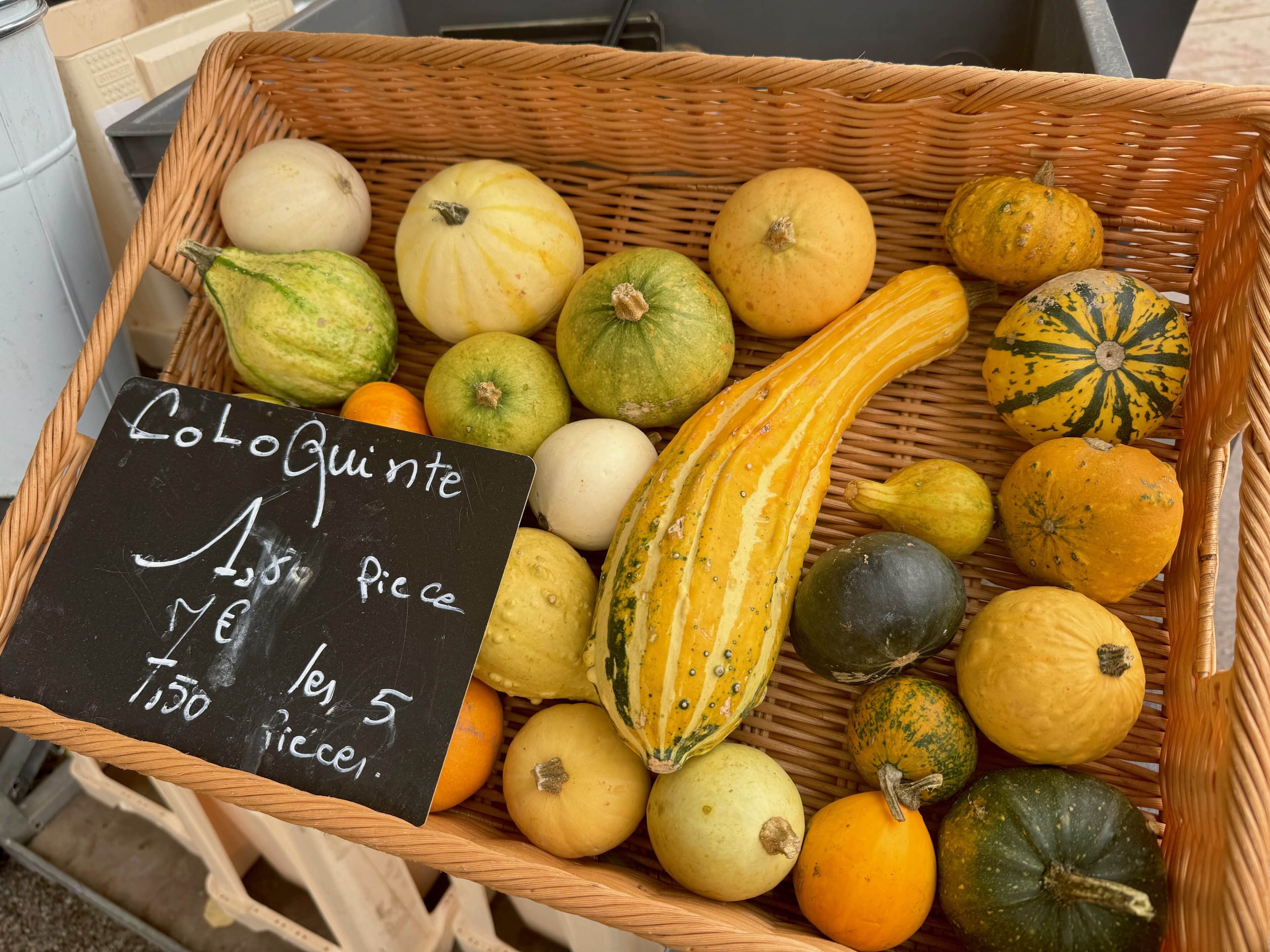
Are Mini Pumpkins Edible?
Often confusing as placed next to the gourds/coloquintes in shops, mini pumpkins are indeed edible. They are hard to the touch but Jack-be-Littles (Little October), and other mini pumpkin varieties (Muchkin) are delicious and particularly good for stuffing.
How to Choose the Best Pumpkins or Squash
To choose the best quality, the harder their skin, the better. If a pumpkin is soft in any way, avoid it!
Also choose with the stalk (pédoncule) still attached and intact, as they will last much longer in a cool, dark place.
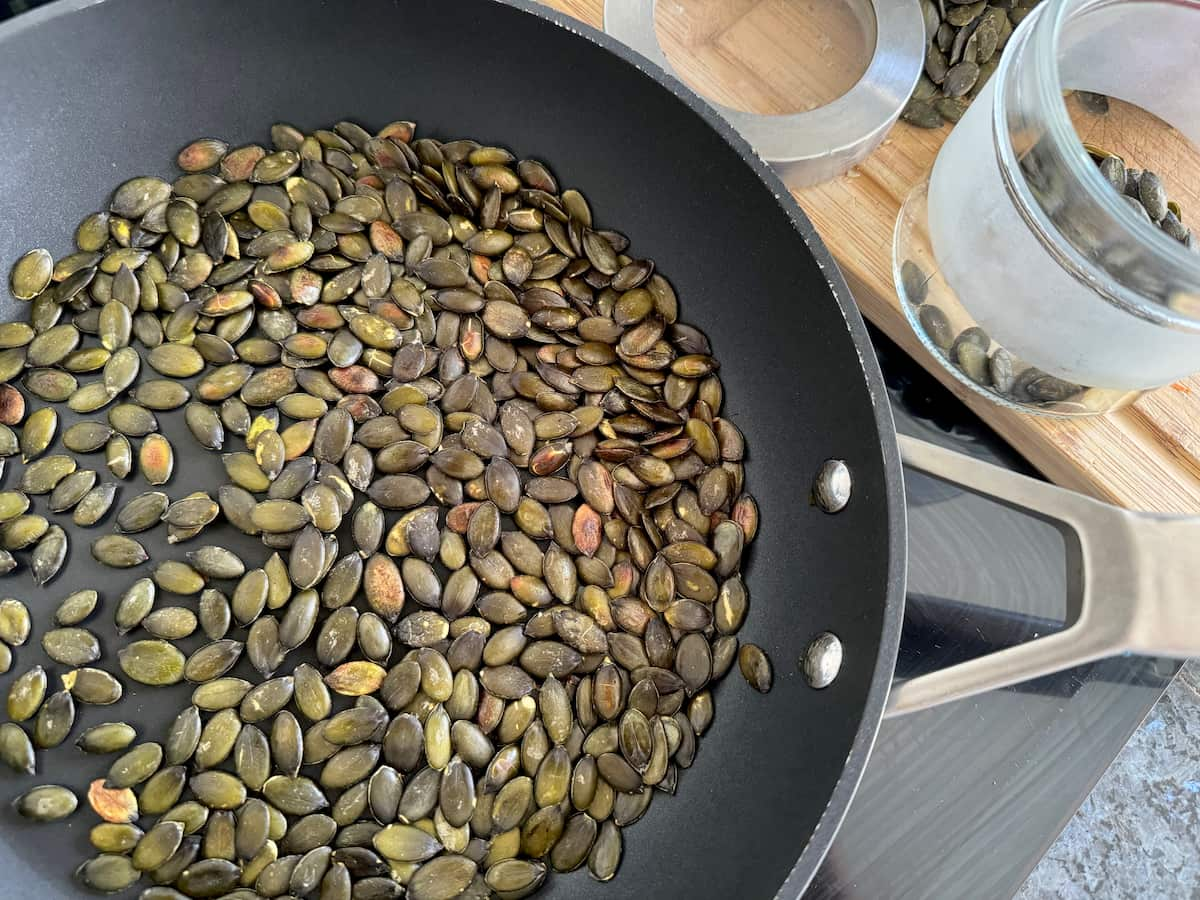
Don't Forget the Seeds! Healthy Pepitas
Recuperate the seeds if you can, so there's zero waste. Remove them from the stringy pulp, wash and leave them to dry. Otherwise, pumpkin seeds or pepitas are easy to buy separately.
Full of iron, they're extremely good for you. Although good raw, we love them best toasted. Simply toast them in a non-stick frying pan without any oil for 3-5 minutes. Leave to cool on the counter and, when cool, store in a sealed jar for up to 6 weeks. They're great thrown on soups and salads.
French Pumpkin Recipes
Here are just a few of our favourite pumpkin recipes.
Pumpkins or squash are normally served savoury in France rather than for dessert. Squash or pumpkins are enjoyed in savoury dishes - particularly paired with sage, mushrooms, apple, chicken or pork (bacon), walnuts and chestnuts.
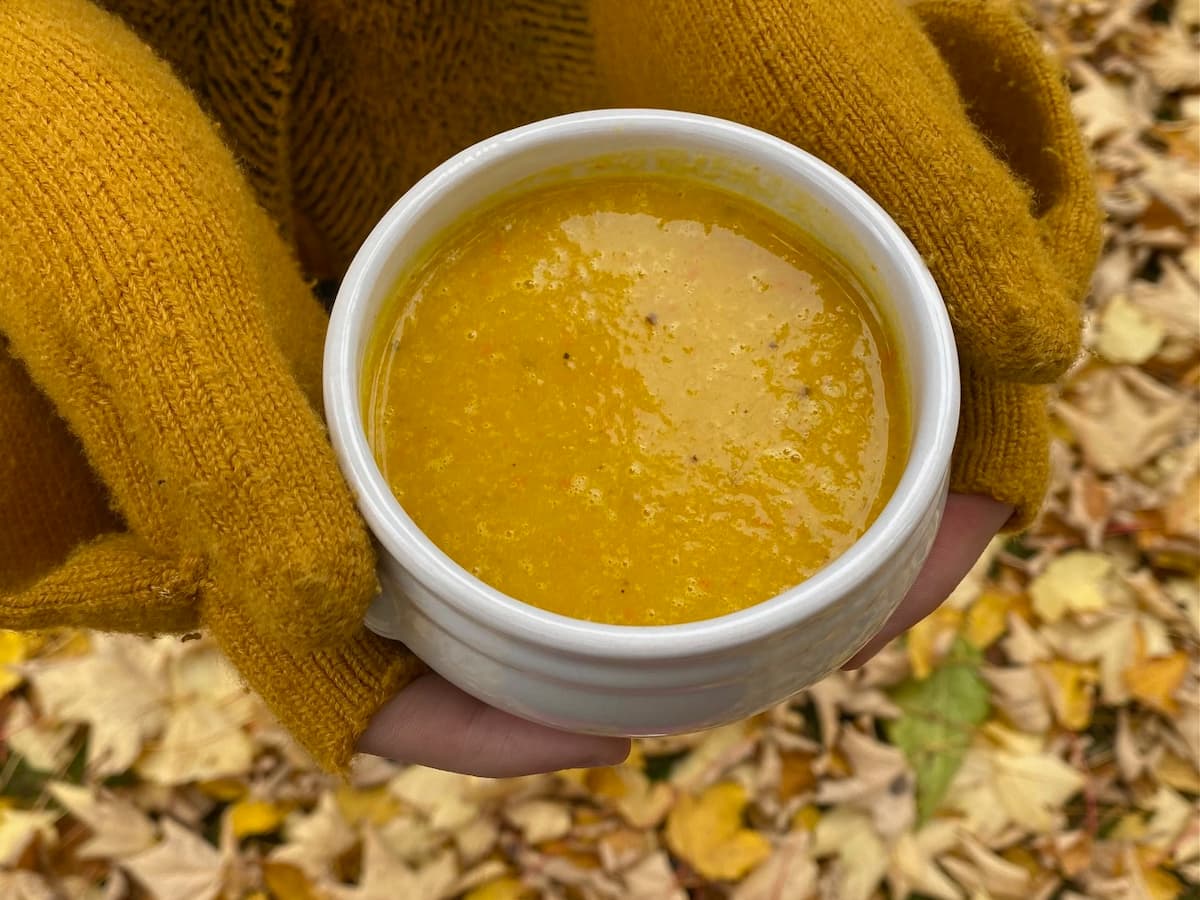
Pumpkin Soup is blended together with leeks for a healthy Autumnal start to any dinner or with a crusty baguette at lunchtime. Add the optional kick of ginger and keep colds at bay.
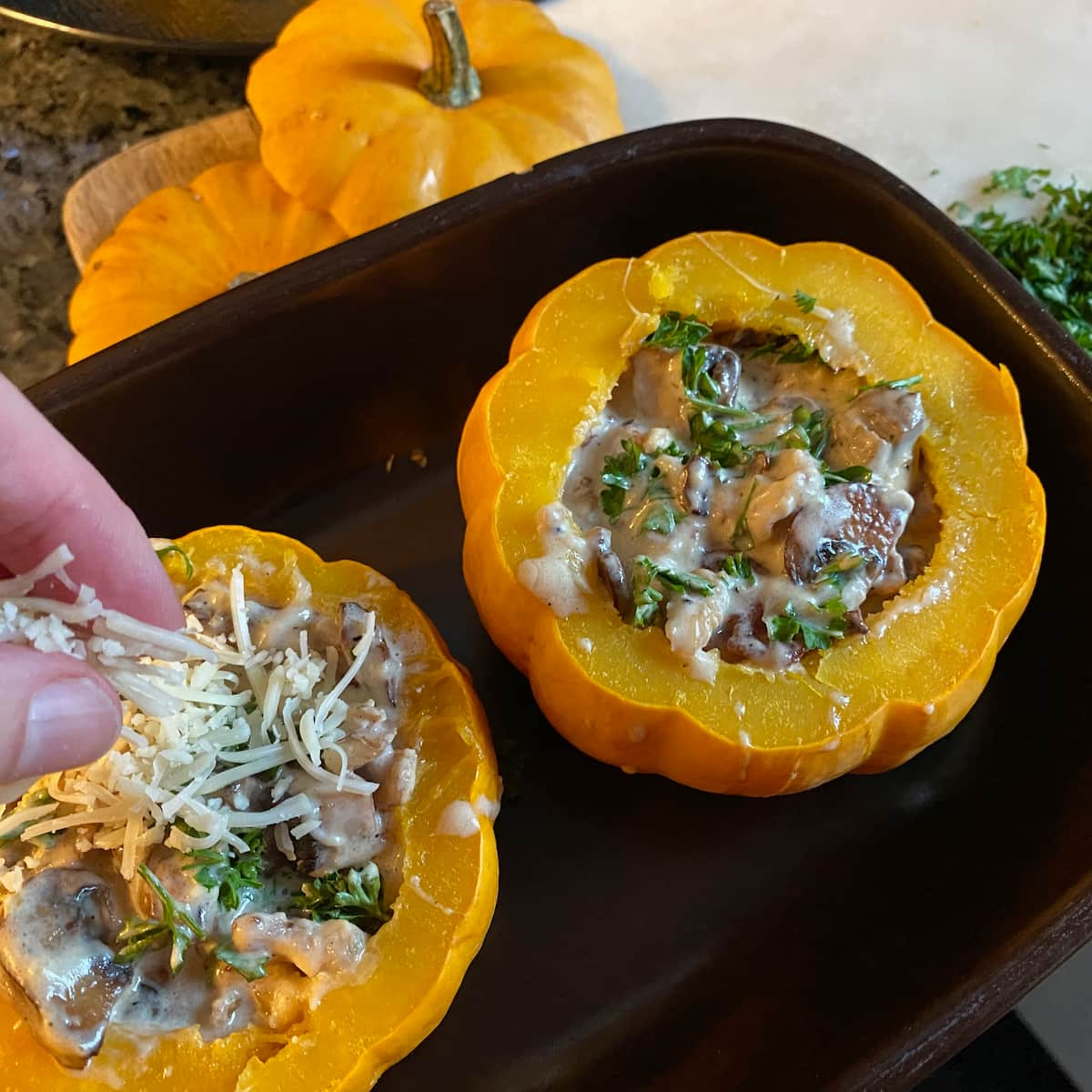
The mini pumpkin, known as Jack-be-Little in France, is best for stuffing. See my quick recipe for mini stuffed pumpkins.
As they're initially cooked in the microwave, it's easy to adapt this recipe to your own favourite flavours. Vegetarians can omit the bacon and vegans can find their own variations for cheese - or faux-mage!
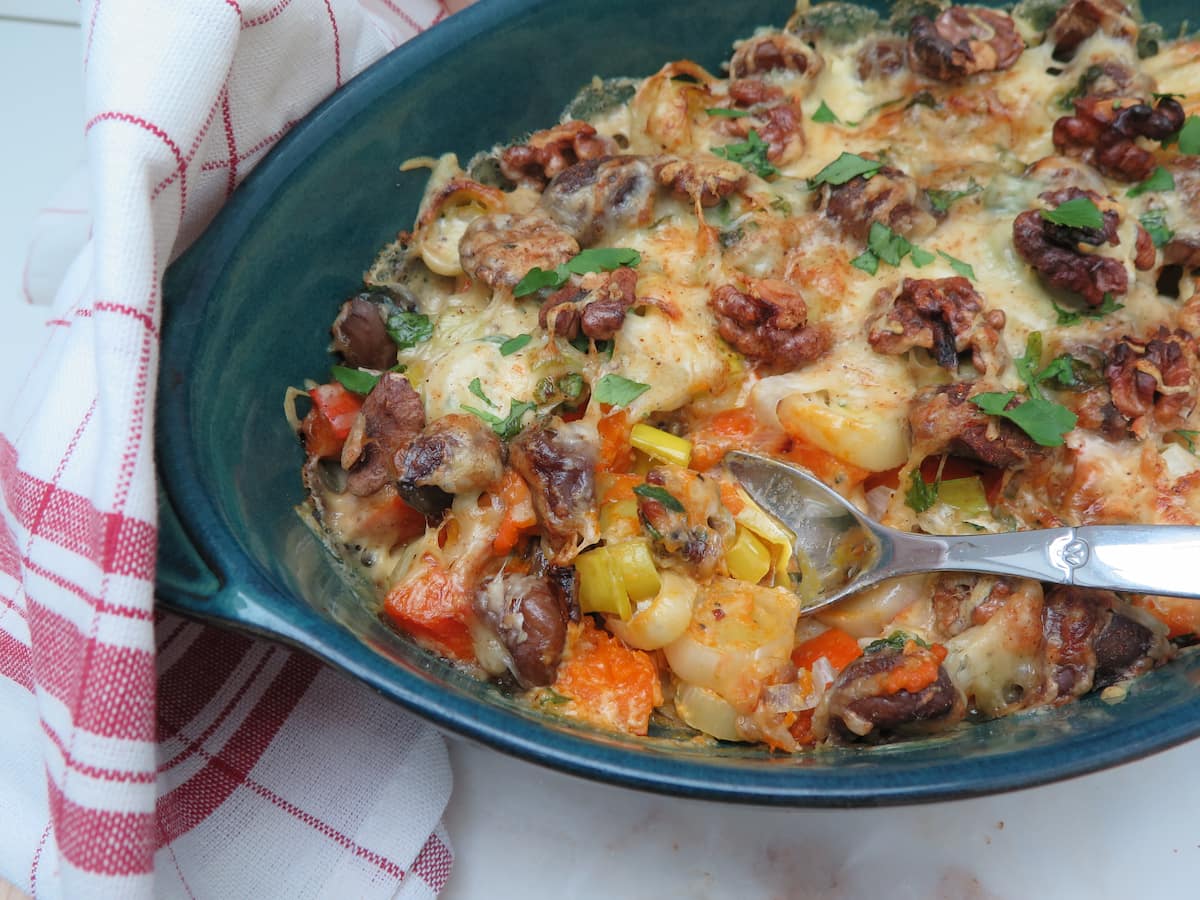
Butternut Walnut Gratin is a comforting one-pot dish enjoyed on its own at dinner or as a side for a vegetarian option for a festive holiday menu.
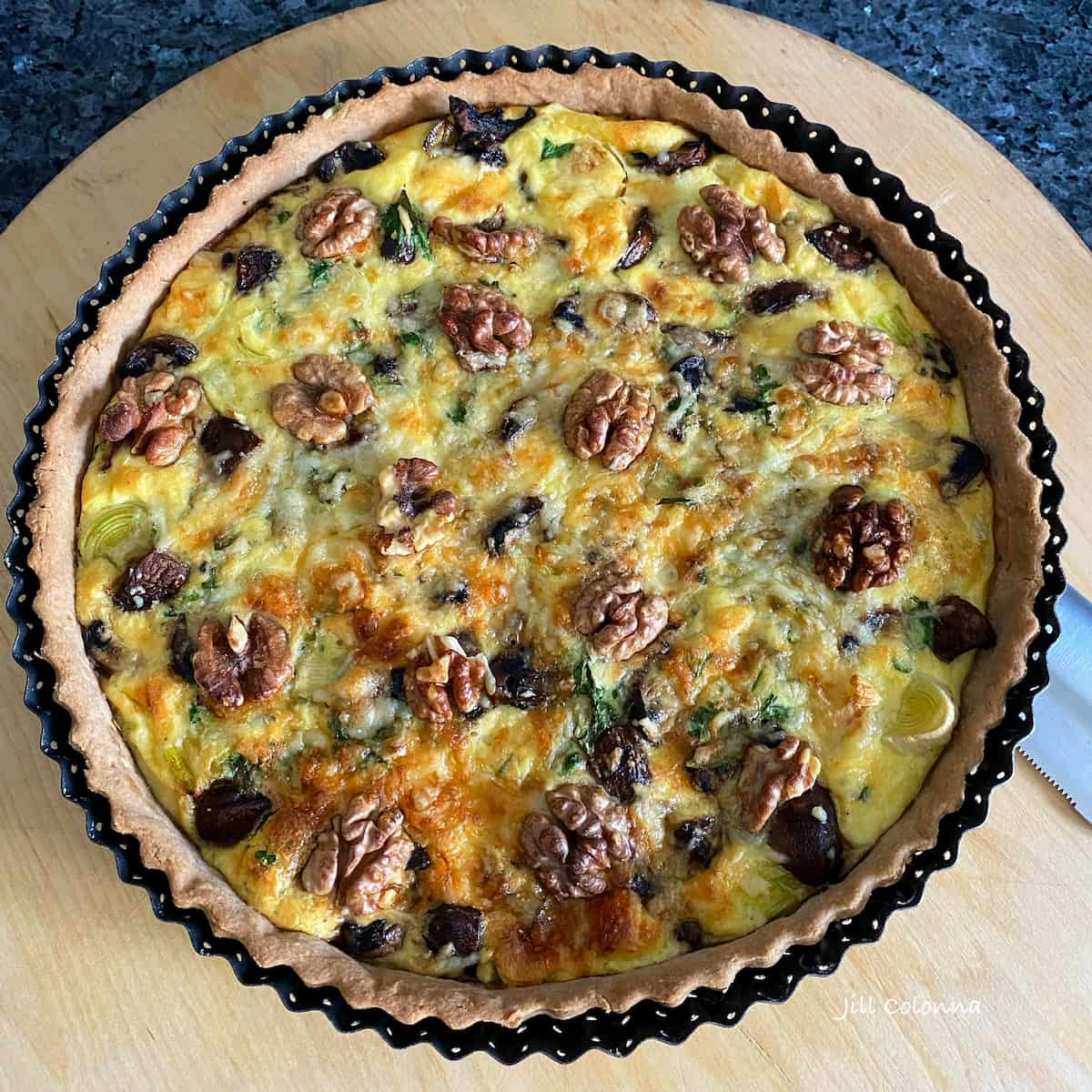
Our version of pumpkin pie - but savoury! It's a pumpkin mushroom tart made with a delicious rustic yet sweet chestnut flour pastry base.
This may take a while to make, but it's so worth it. Every Autumn or fall, our girls beg for this as soon as the leaves start to fall.
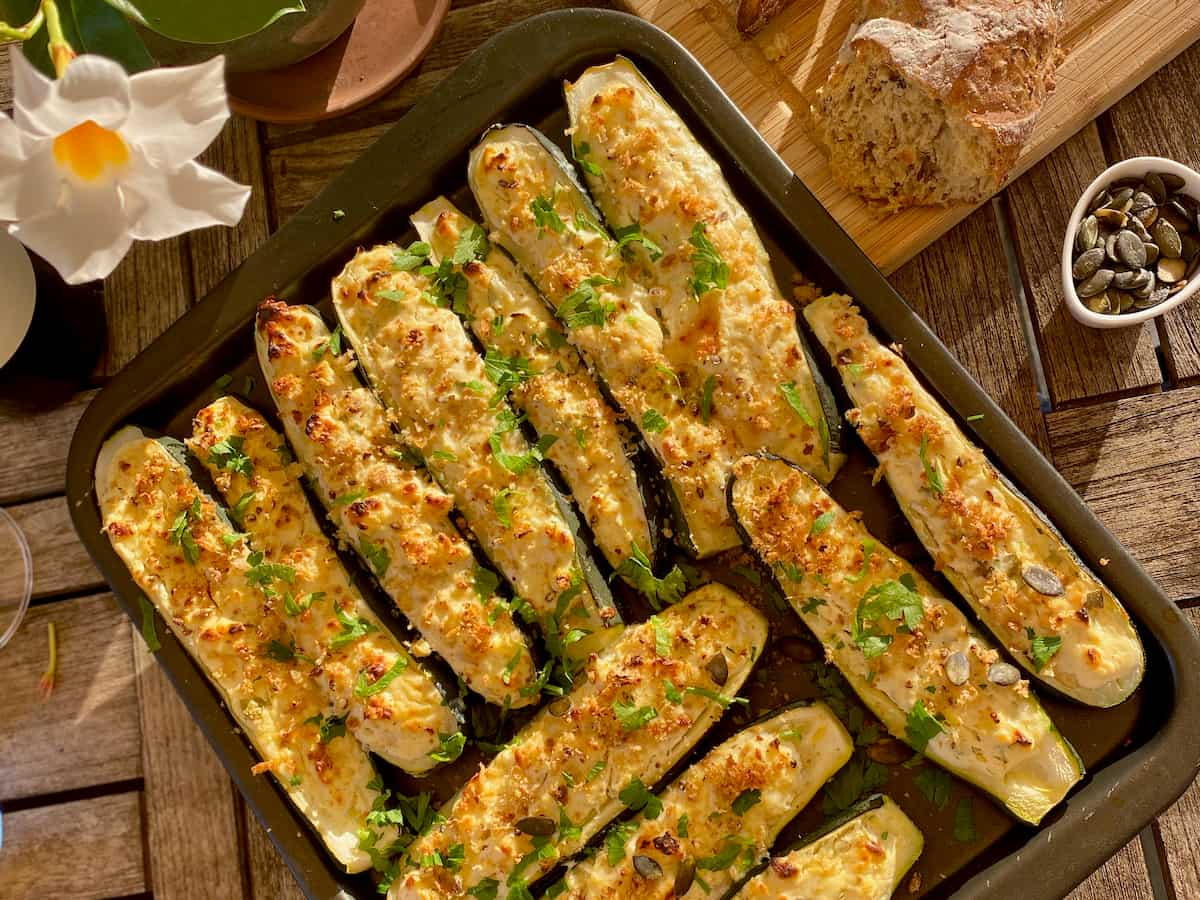
Stuffed zucchini (courgettes farcies) are filled with ricotta cheese, egg, nuts, parmesan and sprinkled with breadcrumbs that all toast in the oven - including the pumpkin seeds.
This is the island of Corsica on a plate with the final touch of fresh herbs - notably mint.
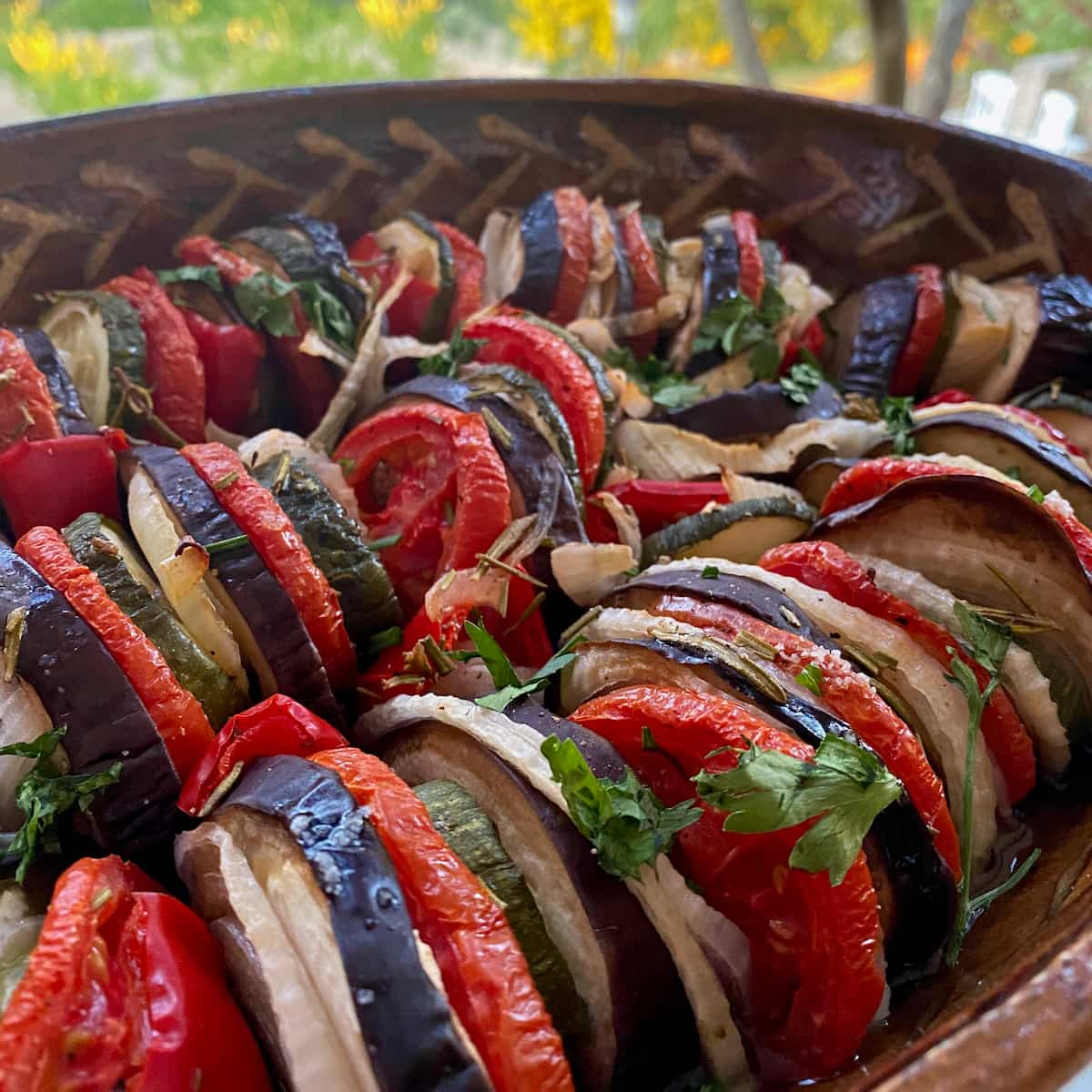
France's answer to a roasted Ratatouille - this is a French Tian de Légumes. Slices of courgettes (zucchini) are interspersed with tomato, aubergine, onions with garlic and herbs and roasted in the oven. The ultimate summer side dish.
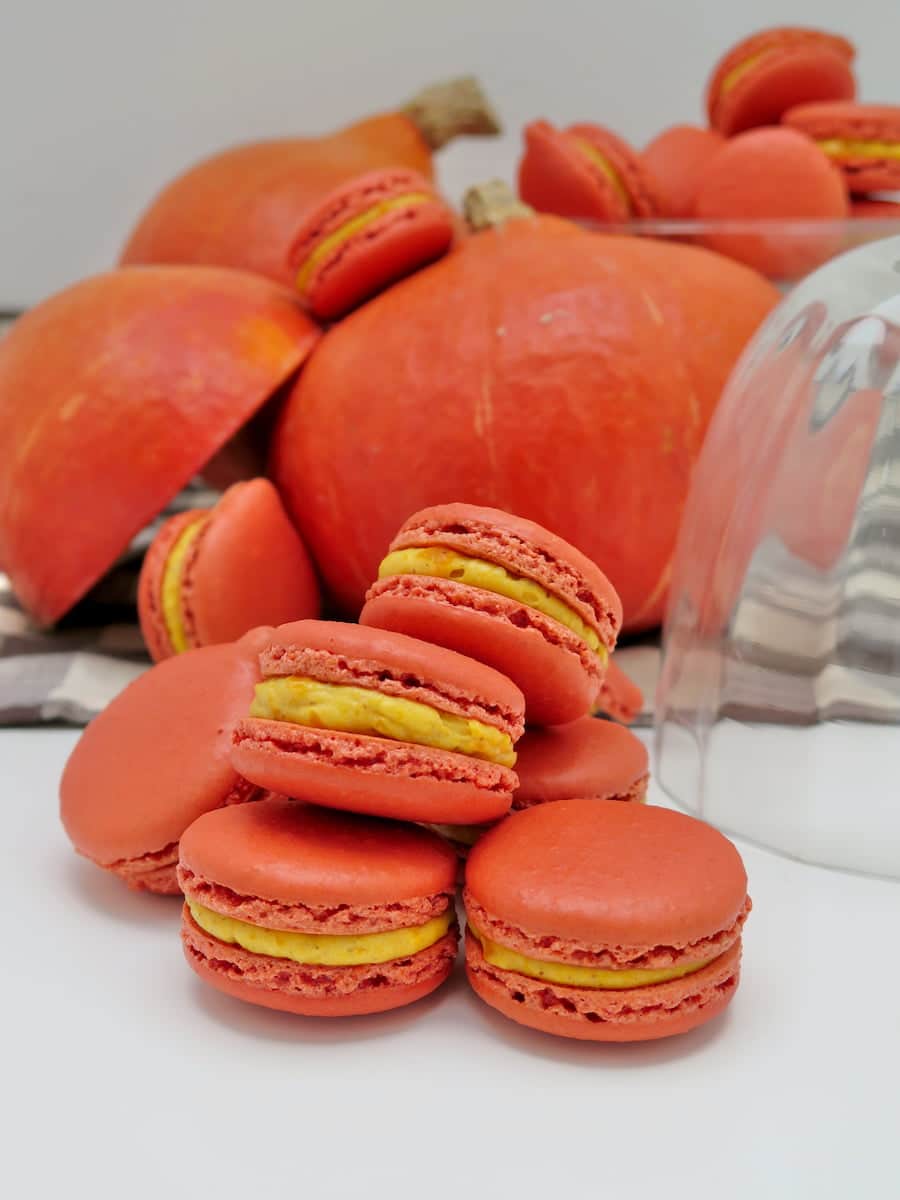
Pumpkin Spiced Macarons - my recipe with real pumpkin in the filling.
Call me mad, but after my recipe books, you'll discover that making macarons at home are fun. You have your own creative canvas. Normally macarons are left to mature for at least 24 hours but these ones are a little different and can be enjoyed on the day.
Looking for more pumpkin inspiration? See my Top Ten Hallowe'en Macaron Ideas.

